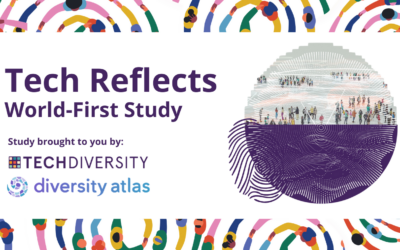Strong words from Kat Barnett, Director Employee Success, JAPAC, Oracle who was also joined by Hiam Sakakini, Transformational Change Consultant, Culture Equation at our recent online discussion, joined by over 100 participants from technology organisations across Australia.
I have to agree with Kat I think she surprised all our participants when she said stop saying we welcome diversity, but her point is valid, diversity is not an invitation to the industry it should be representative of every part of society and Kat stresses our industry NEEDS representation from every facet of society.
The discussion kicked off with a question from one of our participants on how to increase diversity within the workplace. Hiam shared that the first thing a diverse workforce is drawn to is an organisation with a clear purpose and the ‘why’ diverse talent should be attracted to an organisation. Beyond this comes the ‘how’ for organisations on how to achieve those values that attract diverse talent.
I’m glad Hiam flipped the conversation over as to what a diverse workforce is drawn to, much of the general conversations I’ve had around diversity has been focused on how organisations can recruit a diverse workforce. It is an important point for organisations to take on board, they should first look at their own values and purpose to ensure that they attract a diverse workforce. Hiam references Satya Nadella, CEO, Microsoft and his belief that a winning culture means moving from a know-it-all mindset to a learn-it-all one – this type of mindset is key to attracting a diverse workforce.
Another meaty question from a participant I want to highlight here is how to systemise diversity with an organisation. Kat talked about her own experience at Oracle where they make diversity part of their mandatory training alongside their ethics and compliance, and their strong stance of being an equal opportunity employer right from the start. She also highlights that diversity should be on the agenda along with employee health, employee wellbeing and how to achieve business goals. Having the data to hand to regularly report on trends such as promotions and employee experiences and consistently reporting back to ensure regular and consistent interaction will systemise diversity.
There was so many other well discussed points during the discussion I will summarise here, but please if you get a change watch the entire online discussion to gain valuable knowledge so you can be more informed when it comes to diversity.
Neuro Diversity – Hiam shared her own personal story and how it made her look at her workplace through a different lens. I was touched by her story and her statement struck me hard, ‘we are all only one accident away from being a minority group – disability’. Hiam described how people with neuro diverse tendencies bring the gift of looking at the world differently and are highly skilled in pattern recognition, mathematics and memory – these are skills that are getting rarer. This in itself is a sound business case for any leader to start thinking diversity with their own organisation.
Measuring Diversity – The discussion around how SAP are embedding diversity within their organisation through intelligent HR analytics was very insightful. I have been digging deeper into how organisations can use data to truly measure diversity within their organisation and relate it to business outcomes, as quoted by Peter Drucker (arguably the world’s greatest management consultant) if you can’t measure it you can’t improve it. I came across Diversity Atlas, where data points are organised in an easy to understand dashboard, where results can be compared across departments, seniority, and time, offering insight to the extent of diversity within organisations. It’s the closest solution I have seen so far as a diversity data-analysis platform. They have partners such as Australian National University and Australian National Commission, certainly something for organisations to consider as an option to start leveraging diversity to generate successful business results.
Other discussion points included:
- How to ensure diverse initiatives are truly diverse beyond race and gender
- Where and how organisations can recruit diverse talent
- How to avoid management blind spots and ensure every initiative reaches as deeply as possible that looks beyond their own team, and uses data, as well as listening to employees
- Ask one question to yourself today ‘what can I do to be more inclusive at work’
- How we map workplace diversity – look at the employee lifecycle and more
- Try not to let Covid be a barrier, think about how you should be attracting, nurturing, and developing a diverse workplace.
There were more points raised and discussed, my write-up alone does not cover the depth of discussion and key take homes for listeners. Please view the full webinar here.
Make one small change – take our diversity pledge now, start now.



